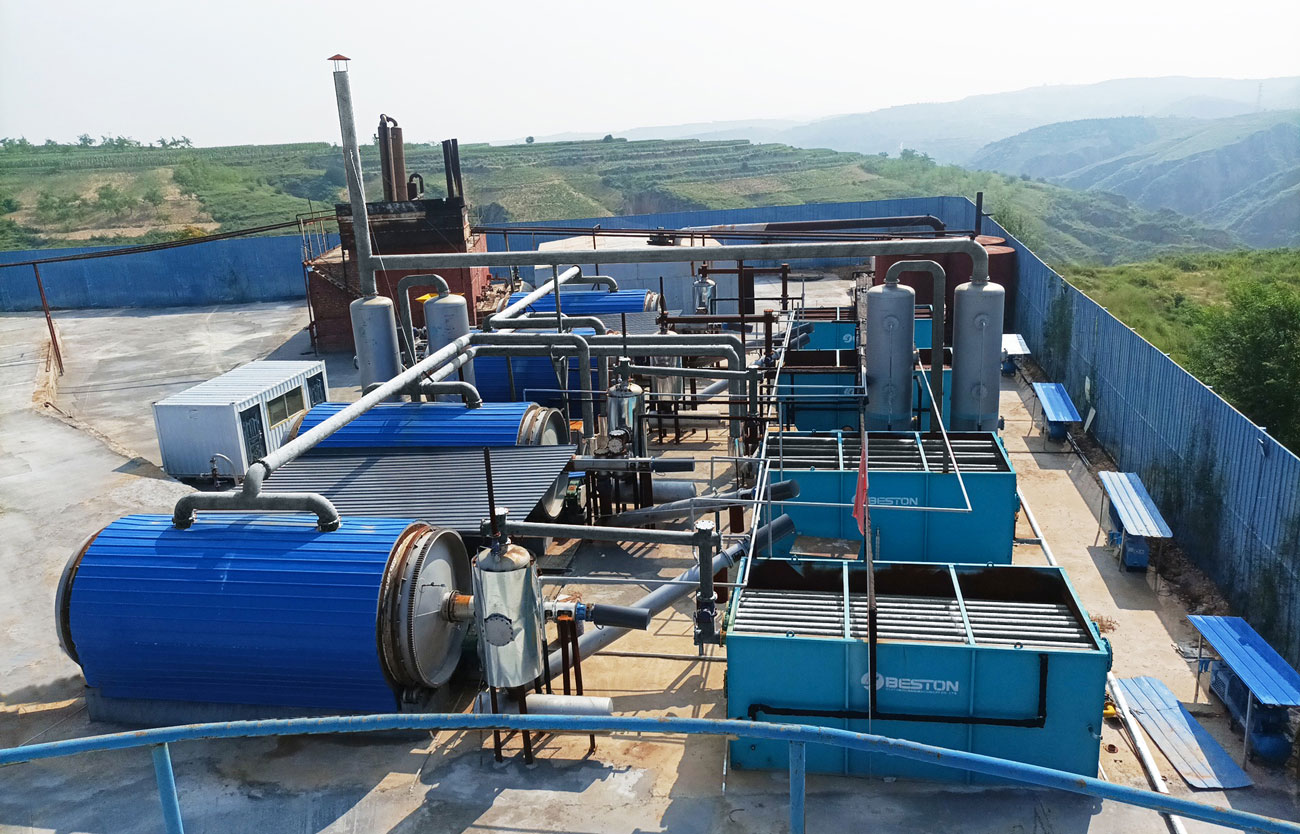Pyrolysis: Environmental Recycling of Scrap Tires
In the quest for sustainable waste management solutions, pyrolysis emerges as a promising technology for the environmentally sound recycling of scrap tires. By harnessing the principles of thermochemical decomposition, tyre pyrolysis plants offer a viable pathway to convert end-of-life tires into valuable products while mitigating environmental hazards associated with traditional disposal methods. In this comprehensive exploration, we delve into the intricacies of tyre pyrolysis, highlighting its environmental benefits, technological aspects, and considerations regarding pyrolysis plant cost.
Understanding Tyre Pyrolysis
Tyre pyrolysis is a thermochemical process that involves heating scrap tires in the absence of oxygen to break down the rubber polymers into smaller molecular compounds, such as pyrolysis oil, carbon black, and combustible gases. This process occurs within a waste tyre pyrolysis plant, where controlled heating and cooling cycles ensure efficient conversion of tire waste into valuable resources.
Key Components of a Tyre Pyrolysis Plant
- Reactor: Where the pyrolysis process takes place, typically operating at temperatures ranging from 300°C to 800°C.
- Condenser: Cools and condenses the pyrolysis gases into liquid products, such as pyrolysis oil and water.
- Gas Scrubber: Removes impurities and contaminants from the pyrolysis gas stream to meet environmental emissions standards.
- Carbon Black Collection System: Collects and stores the solid carbon black residue generated during pyrolysis for further processing or sale.
- Control System: Monitors and regulates process parameters to ensure safe and efficient operation of the plant.
Environmental Benefits of Tyre Pyrolysis
1. Waste Reduction and Resource Recovery
Tyre pyrolysis offers a sustainable solution to the growing problem of scrap tire disposal by diverting these materials from landfills and illegal dumping sites. Through thermal decomposition, scrap tires are transformed into valuable products, including pyrolysis oil, which can serve as a renewable energy source, and carbon black, which finds applications in various industries. Get more detailed tire recycling solutions, welcome to consult Beston Group Co., Ltd.
2. Energy Generation and Carbon Neutrality
The pyrolysis oil produced during the tyre pyrolysis process can be used as a fuel source for industrial boilers, furnaces, and power generation plants, displacing fossil fuels and reducing greenhouse gas emissions. Furthermore, since the carbon in the tires originated from atmospheric CO2 absorbed by plants during photosynthesis, the combustion of pyrolysis oil is considered carbon-neutral, making it an environmentally friendly energy alternative.
3. Circular Economy and Sustainable Development
By repurposing scrap tires into valuable products, tyre pyrolysis equipment contributes to the principles of the circular economy, where resources are reused, recycled, and regenerated to minimize waste and environmental impact. Additionally, the creation of new markets for pyrolysis-derived products stimulates economic growth, job creation, and innovation in the green technology sector.
Considerations Regarding Pyrolysis Plant Cost
1. Initial Investment and Capital Outlay
The pyrolysis plant cost encompasses various factors, including the size and capacity of the plant, the technology and equipment used, and the level of automation and control systems implemented. While larger plants may require higher initial investments, they often offer economies of scale and higher production efficiencies, resulting in lower operational costs over time.
2. Operational Expenses and Maintenance Costs
Beyond the initial investment, pyrolysis plant operators must consider ongoing operational expenses, such as raw material procurement, energy consumption, and maintenance costs. Regular maintenance and upkeep of the plant’s components, including reactors, condensers, and gas scrubbers, are essential to ensure optimal performance and prolong the plant’s lifespan.
3. Regulatory Compliance and Environmental Standards
Compliance with environmental regulations and emissions standards is another crucial factor influencing pyrolysis machine cost. Investing in advanced gas treatment systems, such as scrubbers, filters, and catalytic converters, may incur additional expenses but is necessary to ensure compliance with air quality regulations and mitigate environmental impact.
Future Outlook and Market Trends
The future of tyre pyrolysis is promising, with growing recognition of its environmental and economic benefits driving increased adoption and investment in pyrolysis plants worldwide. As governments implement stricter waste management policies and seek sustainable alternatives to landfilling and incineration, tyre pyrolysis is poised to play a significant role in the circular economy and the transition to a greener, more sustainable future.

Conclusion
In conclusion, tyre pyrolysis represents a compelling solution to the environmental challenges posed by scrap tire disposal, offering a sustainable pathway to convert waste tires into valuable resources. Through the deployment of advanced pyrolysis plants, stakeholders can harness the potential of thermal decomposition to generate renewable energy, recover valuable materials, and contribute to the circular economy. While considerations regarding pyrolysis plant cost and operational efficiency remain paramount, the long-term environmental and economic benefits of tyre pyrolysis position it as a key technology in the global quest for waste reduction and resource conservation.